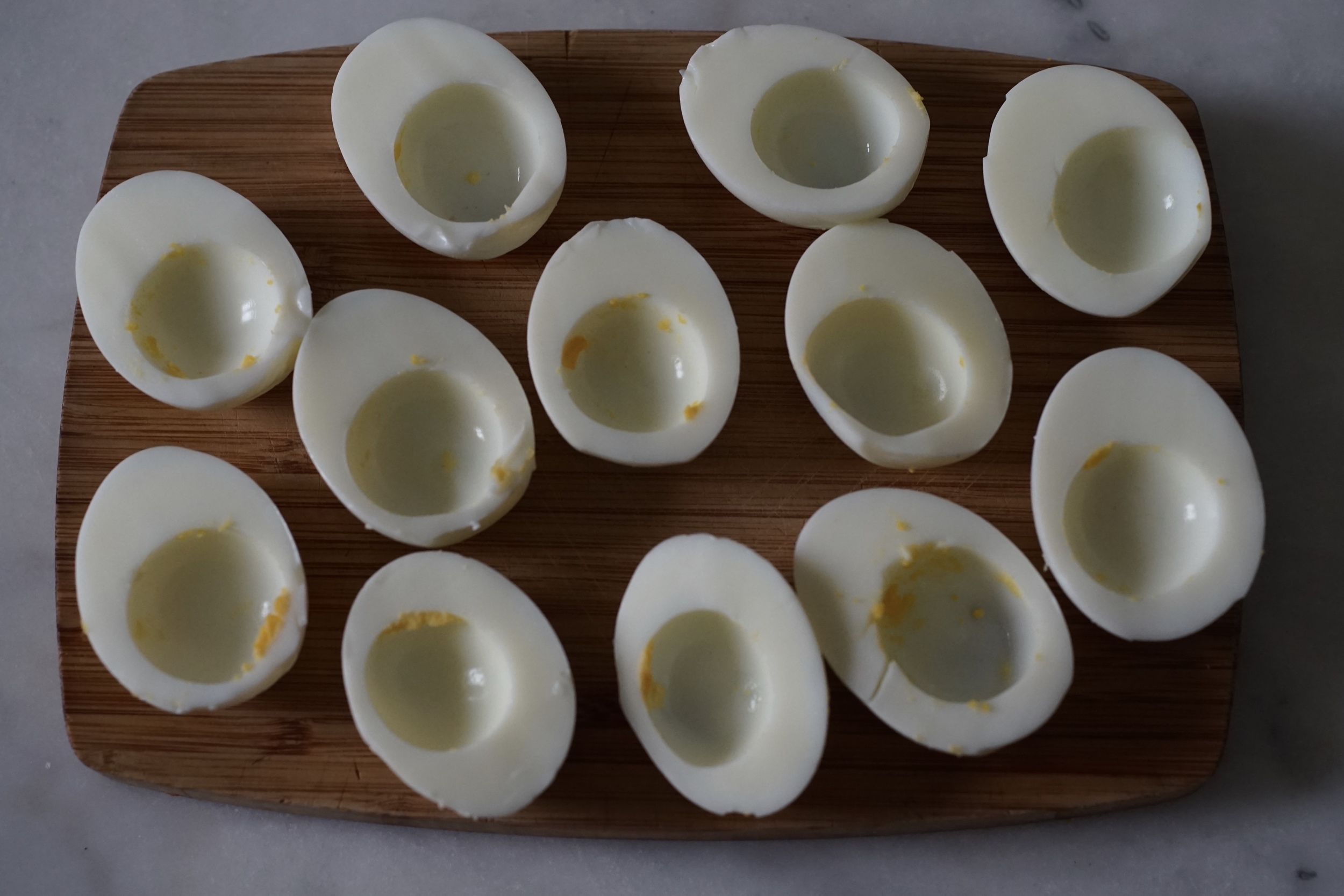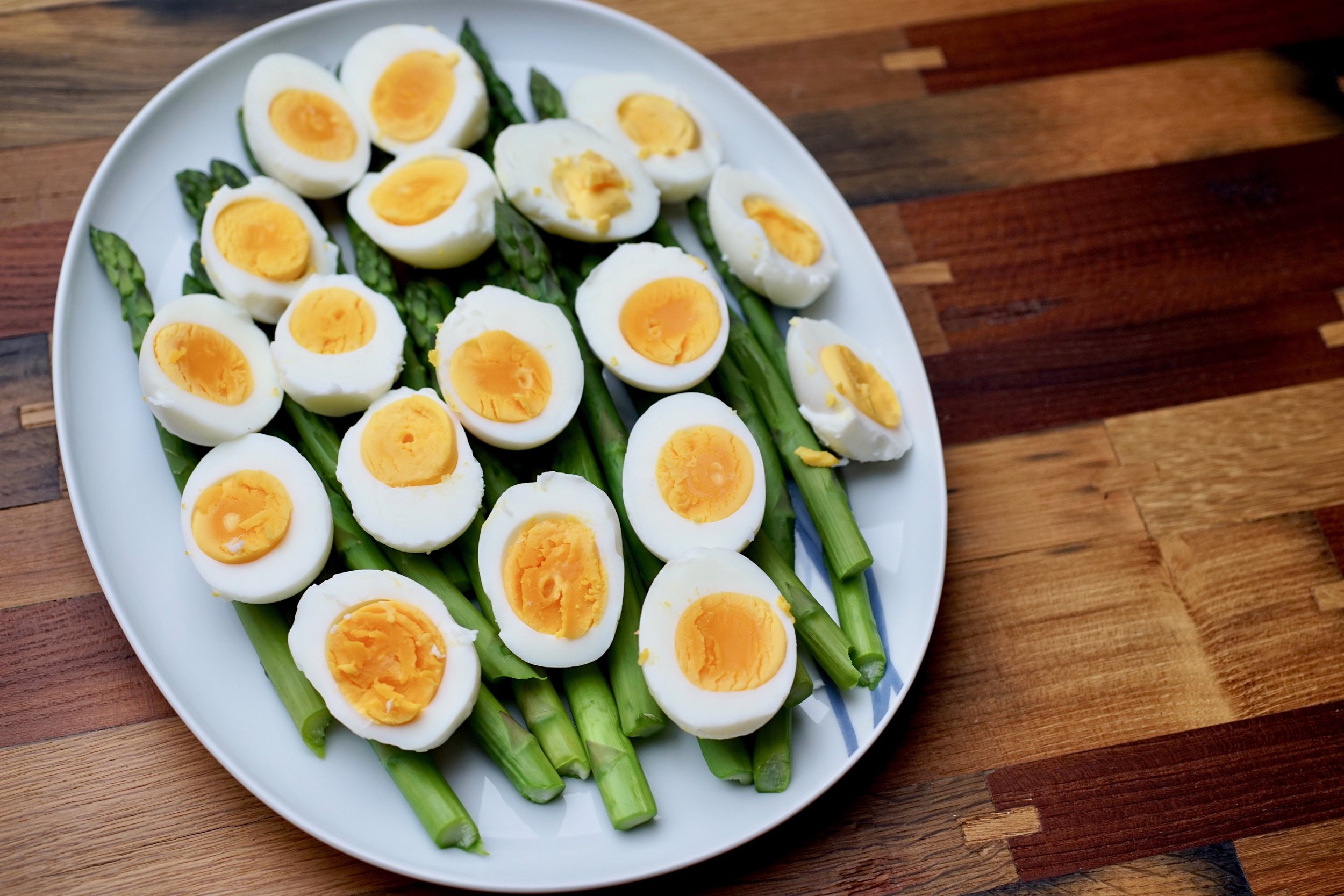Teufelseier
Sam frowned when I asked him if I could call this recipe Eggs zum Teufel, (eggs to the devil) a play on the German expression Was zum Teufel, or what the hell.
"That's not a proper name and it doesn't make sense," he replied, "what's the correct name in Swiss cookbooks?"
"Gefüllte Eier, filled eggs, but that's no fun..."
I eventually settled on Teufelseier, Devil's Eggs. Historically, it was an English etymological habit to link hot foods with the devil. The term 'deviled' first appears in print in 1786, and referred to any spicy dish. Now of course this term is still used for spicy filled food like eggs and crabs, but also rich and decadent ones, like Devil's Food Cake.
As mentioned, these are merely 'filled eggs' in German, although they have a very long history throughout Europe. As early as Roman times filled eggs were served as a first course for wealthy diners. Throughout the ages they have been enjoyed all over Europe with numerous filling variations including: cheese, raisins, herring, anchovies and even caviar.
This recipe comes from the fantastic cookbook Kochen wie im alten Bern and shows the Swiss version from the 1700s. Eggs were harder to come by in the 18th century, especially in winter, so these would have been luxury for many. According to cookbooks of the time, they were often served as an accompaniment to fish.
As for what makes them different from the standard mayo and paprika eggs of today, they are studded with bacon and flavoured with cinnamon, nutmeg and cloves. There is no mayonnaise to bind the eggs, rather a little bit of whipped cream makes for a light, delicious filling. It's kind of like a christmassy bacon and egg breakfast.
5 eggs
50 g cubed bacon, cooked
2 tbsp cream, whipped
about 1 tsp each cinnamon, nutmeg, cloves
handful fresh marjoram, chopped
salt and pepper to taste
Hard boiled eggs:
Put the eggs in a pan and cover them in cold, salted water. Bring to a boil over medium high heat. Once the water is boiling, turn off the heat, cover the pan and let the eggs sit for ten minutes. Drain and rinse the eggs under cold water.
Filling:
Split the eggs lengthwise, carefully remove the cooked yolks and place them in a bowl with the bacon, spices, marjoram, and cream. Mix together well.
Either carefully scoop the filling back into the eggs or use a piping bag to pipe the filling in.
Garnish with marjoram.
If the filling is a bit too thick, add a bit more cream and mix thoroughly.
If you don't have a piping bag, you can always use a ziploc bag and cut out a corner. However, the filling is pretty malleable, so you should be able to just use a spoon to fill it back into the eggs.
More eggs?
Eiervorässe












